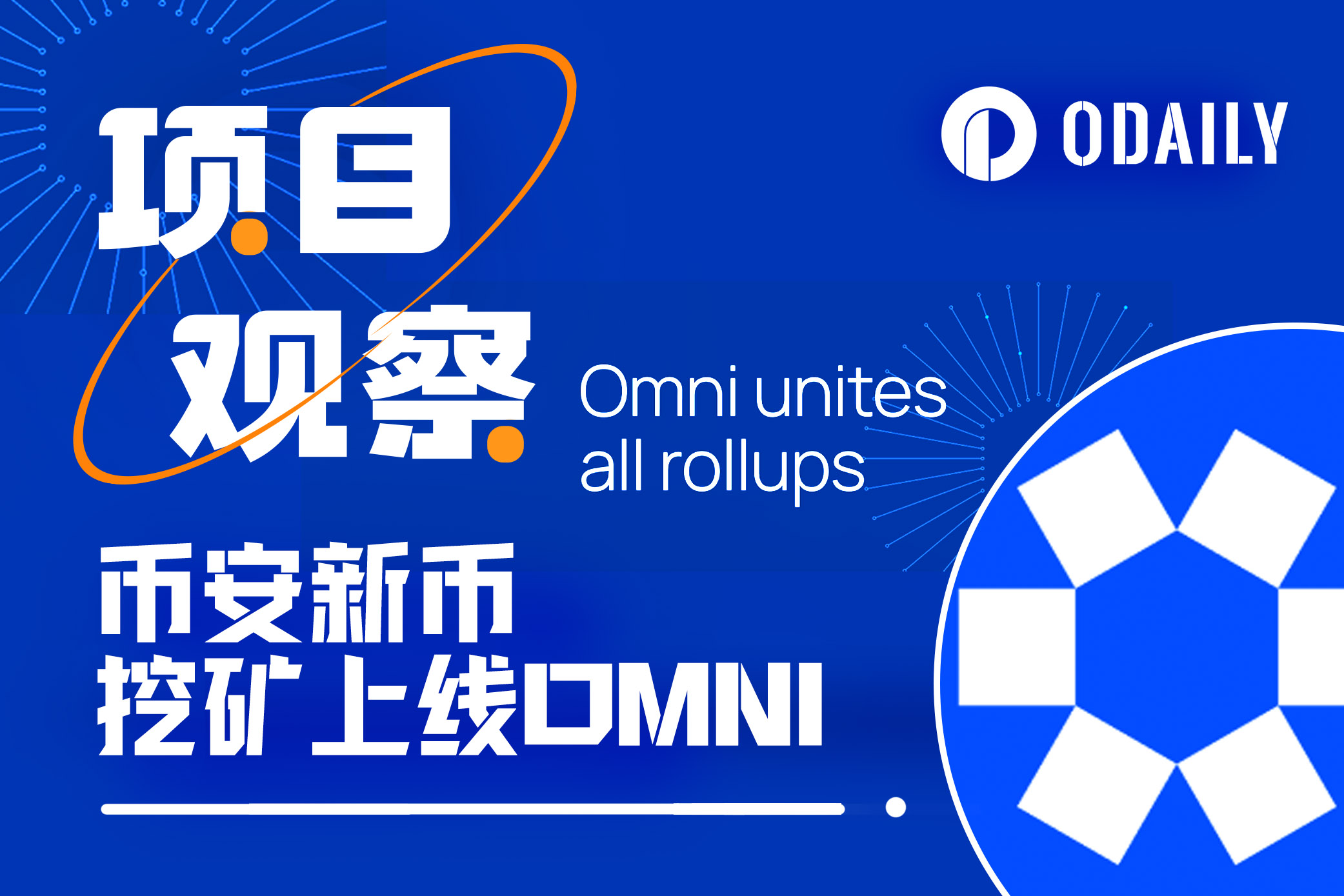Original - Odaily
Author - Husband How

On April 11, the Ethereum interoperability protocol Omni Network announced the details of the token airdrop. The airdrop targets include the Omni community, EigenLayer re-staking users, Beacon Chain Solo stakers, Milady Maker and Redacted Remilio Babies NFT holders, and Pudgy Penguin NFT. holders, Ninjas NFT holders and strategic cooperation agreements.
Shortly after this news was announced, Binance listed Omni Network (OMNI) as the 52nd phase of new currency mining project; users can invest BNB and FDUSD on the Launchpool website after 8:00 on April 13, 2024 (UTC+ 8) Go to the OMNI mining pool to get OMNI rewards. OMNI can be mined for a total of 4 days.
So why does Omni Network receive so much attention from Binance, and can Omni Network solve the current situation of Ethereum’s second-layer liquidity fragmentation? For this reason, Odaily interprets Omni Network.
Project Overview
Basic introduction to Omni Network
Omni Network is based on Ethereums interoperability layer and integrates Ethereums second-layer rollup to provide developers with DApps that can build across multiple second-layer ecosystems. Omni Network features Ethereum-based security support, sub-second message verification, backward compatibility, and an execution environment for building cross-layer DApps.
Omni Network adopts a dual-pledge model of re-pledged ETH and its own OMNI token to protect its validator set through re-pledged ETH, making Omnis security consistent with the security budget of Ethereum L1, thereby achieving higher stability , and align its security foundation with connected Rollups.
Omni Network handles inter-Rollup communication through CometBFT consensus, and uses methods such as predetermination and transaction insurance instead of finalization to achieve sub-second cross-Rollup message verification.
Omni Network provides a dedicated execution environment, Omni EVM, that allows developers to manage all Rollups application deployments from a single location and deploy native global applications (NGAs), giving them access to all Ethereum liquidity and users by default.
Omni Network adopts backward compatibility, allowing applications to integrate Omni without modifying previously deployed contracts, and launches a Gas market to eliminate the problem of inconsistent Gas tokens in different second-tier networks.
All in all, Omni Network unifies the current liquidity of the Ethereum ecosystem due to the birth of different second layers, and achieves the unification of the second layer interconnection by building an interoperability layer, which is also an important step in the interconnection of the Ethereum multi-chain universe. Omni Network relies on Ethereum itself for security through the Active Verification Service (AVS) of the re-pledge protocol EigenLayer, which will improve the security of the interoperability protocol. Its own network adopts a new node structure to separate the consensus layer and execution layer, improving Safety while ensuring operating speed.
Financing
In February 2022, Omni Network (previously known as Rift Finance) announced the completion of US$18 million in financing, with participation from Pantera Capital, Two Sigma Ventures, Jump Crypto, Hashed, The Spartan Group, etc.
OMNI Token Economics
The total supply of OMNI tokens is 100 million, and the circulating supply after listing is approximately 10,391,492 (approximately 10.39% of the total token supply), of which the Binance Launchpool quota is 3.5 million, accounting for 3.50% of the total token supply. %.
In addition, according to Binance reports, Omni Network has raised $18.1 million through two rounds of private token sales, totaling 20.1% of the total token sales. They are sold at unit prices of $0.18 and $1.5 respectively.
The OMNI token allocation is 3.50% to Binance Launchpool, 29.5% to the ecosystem fund, 25.25% to the team, 20.06% to private investors, 12.67% to community funds, 5.77% to the public offering, and 3.25% to advisors.
Among them, the team and private investors will release tokens in April 2025, and the rest, except for the public offering and Binance Launchpool, will be released in a ladder manner.
Generally speaking, the early selling pressure is not heavy, but we should pay attention to the key node in April 2025 for the large-scale release of tokens.
Token usage
OMNI is the native token of Omni Network and will provide functions such as fee payment, governance, network gas and staking, among which:
Fee Compensation: The token OMNI is used as a payment mechanism to compensate relayers for submitting transactions to the target Rollup.
Network Gas: OMNI is the native token used to process transactions on the Omni EVM.
Network governance: OMNI tokens provide governance voting to ensure the decentralization of the network.
Staking: Omni, as a proof-of-stake network, pledges OMNI tokens to improve network security.
Token airdrop
Omni Network announced the genesis airdrop, using 3% of the total token supply for airdrop, totaling 3 million tokens. The following are the airdrop token distribution standards
The Omni community allocates 1.5 million OMNI, accounting for 50%;
EigenLayer re-staking users allocate 400,000 OMNI, accounting for 13.3%;
Beacon chain Solo pledgers are allocated 300,000 OMNI, accounting for 10%;
Milady Maker and Redacted Remilio Babies NFT holders were allocated 380,000 OMNI, accounting for 12.7%;
Pudgy Penguin NFT holders are allocated 170,000 OMNI, accounting for 5.7%;
Ninjas NFT holders are allocated 75,000 OMNI, accounting for 2.5%;
The strategic cooperation agreement allocates 175,000 OMNI, accounting for 5.8%.
The airdrop snapshot is on April 3, 2024. Users have 45 days to claim the token OMNI. After that, all unclaimed tokens will be returned to the Omni Foundation for future community activities.



